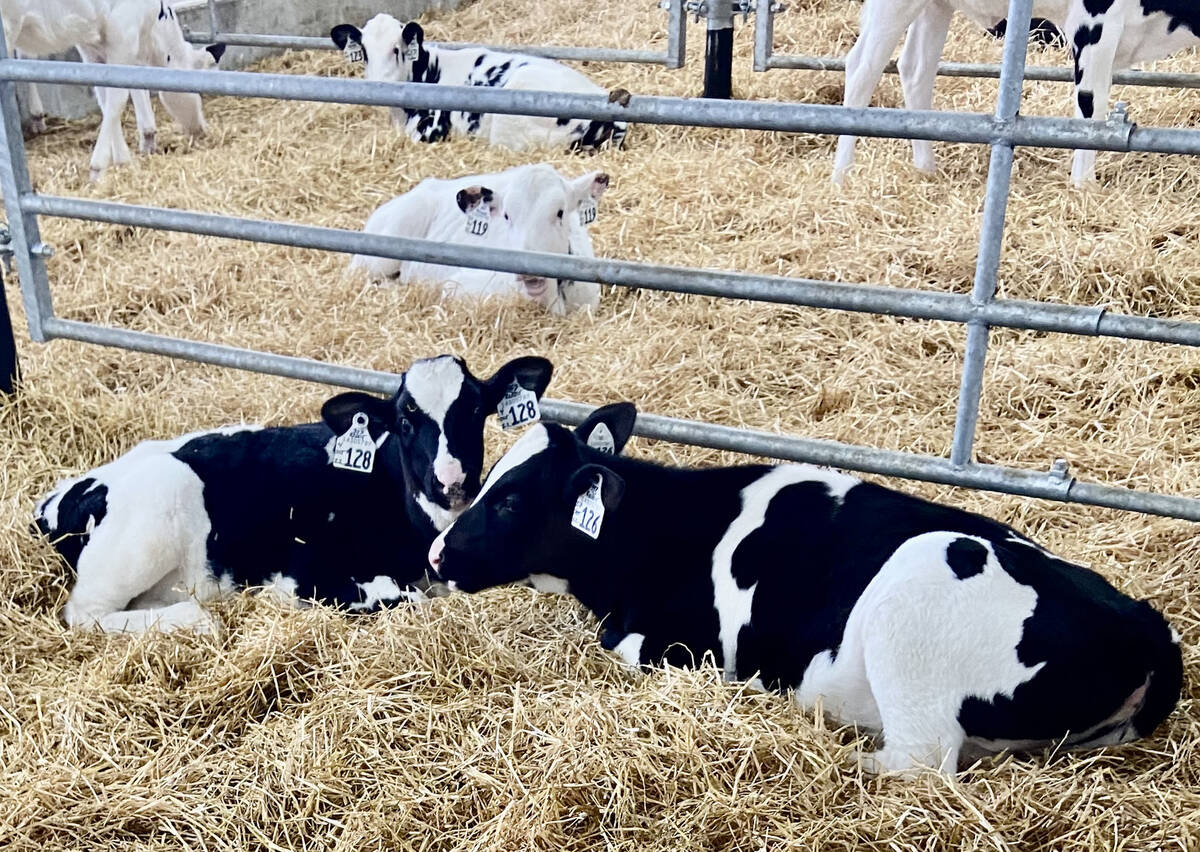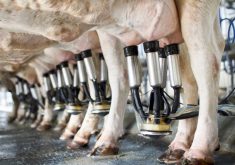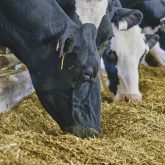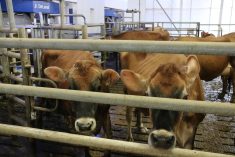Glacier FarmMedia – Most producers usually wait until estrus appears in a dairy cow at 60-70 days postpartum, then place an emphasis on getting her pregnant by 90 days.
This practice maintains a 13-month calving interval. Unfortunately, the onslaught of cystic ovaries in 30 per cent of all breeding cows makes it a challenge. Yet, there is hope that good nutrition, prior to and right-after they calve, can eliminate a significant number of cystic ovaries from occurring in the first place.
Energy status in lactating dairy cows is the first limiting nutrient that most affects the incidence of cystic ovaries.
Read Also

Back to the drawing board for sexed semen fertility ratings
Lactanet, the national genetic evaluation and dairy data provider, goes back to the drawing board with its sexed semen fertility rating index prototype.
The actual energy requirement for successful follicular ovulation is very low, at three megajoules (MJ); it also takes on an extremely low priority, compared to 60 MJ for vital body needs and up to 250 MJ for milk production during early lactation days.
Early-lactation dairy cows do not consume enough dietary energy to meet such high levels of milk production and thus are in a “negative energy balance” (NEB) for about six weeks after calving, which adds to the energy challenge.
As a result, one can speculate that being in a NEB makes cows even more susceptible to higher incidence of ovarian cysts.
Reproductive research dictates NEB in dairy cows can adversely affect normal development of follicles by disrupting the production of essential tissue-specific and systematic hormones.
For example, it has been proved that when a cow has poor energy intake there is a significant decrease in the levels of follicular and corpus luteum hormones that complete her normal estrus cycles after calving. Other similar studies demonstrate that the release of large amounts of fatty acids from the breakdown of body fat during NEB is also poisonous to fertile egg cells, even if they are released during the ovulation process.
What to do?
Over the years, there have been several hormone protocols using GnRH, progesterone and prostaglandins to treat cystic ovaries in chronic cows. Subsequent research suggests they are highly effective to induce ovulation, but often retain lower conception rates.
Although I know of several dairy producers who have complete reliance upon periodic hormone treatments, I suggest they shouldn’t give up on a good nutrition program that could help reduce ovarian cysts in their early-lactation cows. My dietary suggestions:
Pre- and post-partum feed
Implement proper transition/early lactation diets (three weeks before and three weeks post-partum). This should be done to promote good dry matter intake, optimum body condition (see below) and reduce NEB during early lactation. Close-up dry cow diets should dovetail into early 60- to 90-day lactation rations.
Both diets should provide adequate dietary energy, as well as provide enough forage fibre to maintain excellent rumen health. Another of the goals is to build up feed intake to about 3.5 to four per cent of cows’ body weight by nine to 10 weeks post-partum.
BCS at its best
Maintain a body condition score (BCS) of 3 to 3.5. Existing research demonstrates that over-conditioned cows (on a BCS scale where 1 = emaciated and 5 = obese) are 2.5 times more likely to develop ovarian cysts during the first 60 days, post-partum, compared to lactating cows with an optimum BCS of 3 to 3.5.
A direct link to cystic ovaries has yet to be proven, but thin lactating dairy cows of less than 2.5 BCS have been shown to have a high incidence of silent heats and lower conception rates.
Serve up supplements
Feed adequate levels of trace minerals and vitamins. Deficient levels of copper, manganese, zinc and selenium and inadequate vitamins A, D and E are known to cause anestrus, or a lack of heat, in female cattle.
For example, Ohio State University animal scientists reported cystic ovaries were diagnosed in 19 per cent of a split-group of dairy cows injected with selenium, compared to a 47 per cent incidence of cystic ovaries in an untreated control group.
Avoid mouldy feeds
Zearalenone, a mycotoxin produced in mouldy corn, has estrogen-like properties and has caused many reproductive problems including a higher incidence of ovarian cysts in dairy cattle. The poisonous threshold of zearalenone is 200 p.p.b. in lactation dairy diets.
These are only a few good suggestions I believe can reduce the incidence of cystic ovaries in many dairy herds. Regimens such as good early-lactation nutrition — which can affect the matrix of 30 to 40 reproductive hormones for successful release of an ovum — should be seriously examined and implemented.
Peter Vitti is an independent livestock nutritionist and consultant based in Winnipeg. To reach him call 204-254-7497 or by email at [email protected].












